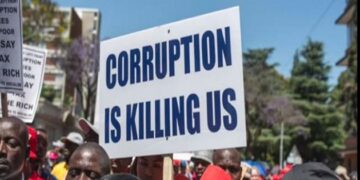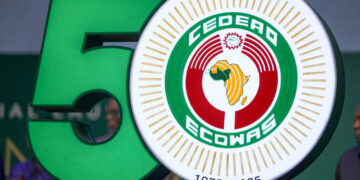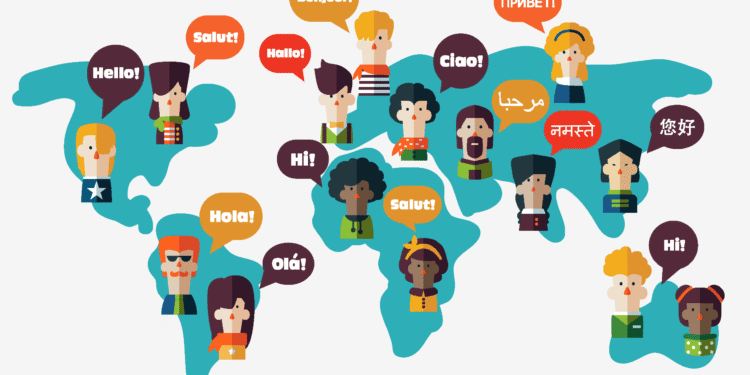Language is one of the very essences of human existence. Every language is a unique lens through which a community perceives the world, encodes its history, transmits its knowledge, crafts and preserves its cultural identity, yet it is under a serious threat. Linguists and cultural preservationists warn that we are in the midst of a global linguistic crisis, with estimates suggesting that half of the world’s 7,000 languages could vanish in this 21st Century. (UNESCO, 2024). This article delves into the phenomenon of language extinction, focusing on its alarming rate in Africa and exploring the broader global perspective with illustrative examples.
The Global Perspective: A Silent Epidemic
Language extinction is not a new phenomenon; languages have always come and gone throughout history. However, the current rate of disappearance is unprecedented, largely fuelled by globalization, urbanization, cultural assimilation, and economic pressures. As dominant languages such as English, Spanish, French and many others gain control in education, media, commerce and governance, minority languages are increasingly marginalized. This often leads to a breakdown in intergenerational transmission, where generations no longer learn their ancestral tongues, preferring languages perceived to offer greater social mobility and economic opportunity (Bureau Works, n.d.). The Summer Institute of Linguistics revealed in 2017 that Ghana has about 81 living languages, of which 73 are indigenous and 8 non-indigenous. Out of the total number, 13 languages are institutional, 46 are developing, 15 are vigorous and 7 are in trouble. This is an indication that if care is not taken, the nation could lose some of its languages in the years to come, as stated by UNESCO.
UNESCO categorizes languages based on their level of endangerment from Vulnerable-not spoken by children outside the home to Critically Endangered- only spoken by the oldest generations and Extinct-no living speakers (UNESCO, 2024). Regions with high linguistic diversity, are particularly vulnerable to language extinction. In Ghana, most people resort to speaking the colonial language, which is English, to the detriment of the Ghanaian languages as it is mostly used as the medium of communication both in and outside the home. The ability to speak English is seen as a special skill that everyone must possess, which therefore poses a threat to the local language.
Hotspots for language endangerment include Eastern Siberia, Northern Australia, Central America, and specific areas within Asia and Africa (Wikipedia, n.d.). The consequences of this linguistic loss are profound. When a language dies, it’s not just a set of words and grammatical rules that disappears; it’s a unique way of thinking, a repository of traditional ecological knowledge, medical practices, cultural narratives, and a distinct worldview that vanishes forever (True-Talk LMS, 2025). David Crystal, a prominent linguist, estimates that on average, a language disappears every two weeks (Isa et al., 2020). This rapid decline signifies a significant loss for humanity’s collective cultural and intellectual heritage.
Africa’s Linguistic Legacy Under Siege
Africa is a continent of incomparable linguistic diversity with over 2,000 languages, representing nearly 30% of the world’s total linguistic heritage (Ethnologue, 2023, as cited in True-Talk LMS, 2025). However, this rich heritage is facing a serious crisis, with many African languages critically endangered or already extinct. The factors contributing to language loss in Africa are complex, rooted in historical legacies and contemporary socio-economic realities.
Colonial Legacies: The enduring impact of colonialism is one of the most significant factors. European languages (English, French, Portuguese, etc.) were imposed as official languages for education, administration, and commerce. This marginalization of indigenous languages during the colonial era continues today, with many African nations still prioritizing these ex-colonial languages in formal settings. Parents prefer to speak the colonial language with their children at home because they believe it is the language that would help them to excel. As a result, a mere 4% of African languages are used in formal education (World Bank, 2021, as cited in True-Talk LMS, 2025), creating a barrier to learning in one’s mother tongue and perpetuating a linguistic hierarchy that disadvantages indigenous speakers. Niger’s move to adopt Hausa as its official language could be a great move towards reinstating local languages into their original positions.
Economic Marginalization and Globalization: The perceived economic advantage of dominant languages plays a crucial role. In many African countries, fluency in English or French is seen as a prerequisite for professional advancement and access to better job opportunities. This motivates younger generations to abandon their mother tongues in favor of these more “globally marketable” languages (Afrobarometer, 2022, as cited in True-Talk LMS, 2025). This phenomenon is evident in Nigeria, which boasts of over 500 languages, yet young people increasingly prioritize English over languages like Yoruba and Igbo for perceived career benefits (True-Talk LMS, 2025).
Urbanization and Migration: Rapid urbanization is another critical factor. As people migrate from rural areas to cities in search of better economic prospects, they are often exposed to dominant lingua francas like Hausa and Swahili or the former colonial languages. This shift disrupts the intergenerational transmission of smaller, localized languages. The scattering of speakers across different regions also leads to linguistic fragmentation within communities, accelera
ting decline (Isa et al., 2020).
Lack of Documentation and Institutional Support: Many indigenous African languages suffer from insufficient documentation, lacking essential resources like grammars, dictionaries, and written materials. This absence makes it incredibly challenging to learn, teach, and transmit these languages to future generations. Furthermore, inadequate support from educational institutions and government policies often means these languages are not integrated into formal education systems, reinforcing their marginalization (Bureau Works, n.d.). An institution like the Ghana Bureau of Ghana Languages is doing its bid to document local languages especially, the ones going extinct, but more can be done in our local communities to save the situation.
Case Studies of Language Endangerment in Africa:
- Dompo (Ghana): The Dompo language, spoken in the Bono Region of Ghana, is critically endangered with only a handful of aged fluent speakers remaining. Its vibrancy has been lost to Nafaanra, a dominant area language, due to intermarriages, emigration of speakers, and a lack of interest from younger generations (Manu-Barfo, 2020, as cited in Sabinet African Journals). Other languages such as Ahanta, Sisala, Ewutu-Effutu, Larteh-Kyerepong and Ahanta are also going extinct due to language shift. These examples highlights how the shift to a regionally dominant indigenous language can also lead to endangerment.
- Ongota (Ethiopia): This language is down to just 12 speakers, severely impacted by dam projects that forced community relocations, demonstrating how environmental and development projects can inadvertently accelerate language loss (BBC, 2022, as cited in True-Talk LMS, 2025).
- Yangkam (Nigeria): Spoken by fewer than 100 people, mostly over 50 years old, Yangkam speakers have largely shifted to Hausa due to historical disruptions like the slave trade (Swarthmore College, n.d.).
- Khoisan Languages (Southern Africa): Many Khoisan languages, known for their unique “click” sounds, are severely endangered or extinct. For example, Nǁng is critically endangered, with efforts underway to revitalize it after years of decline (ResearchGate, 2018).
The Profound Impact of Language Loss
The disappearance of a language has cascading effects across social, cultural, and even economic spheres.
Cultural Erosion: Language is inextricably linked to cultural identity. It’s the vessel for oral traditions, folklore, proverbs, songs, and unique expressions that define a community’s heritage. When a language vanishes, these invaluable cultural elements are often lost forever, severing a critical link between generations and eroding a people’s sense of self and belonging (Jay Lit, 2024; True-Talk LMS, 2025). It’s “the heartbeat of a people” (Right for Education, 2025).
Loss of Knowledge Systems: Indigenous languages often encapsulate unique knowledge about local ecosystems, traditional medicine, sustainable practices, and historical events. This invaluable, often undocumented wisdom is lost with the language, impacting fields from environmental conservation to medical research (ResearchGate, 2025).
Social Inequality and Discrimination: The dominance of a few major languages can reinforce social inequalities. Those who do not speak the dominant language may face discrimination in education, employment, and public services. This linguistic marginalization can contribute to feelings of inferiority and further pressure to abandon one’s mother tongue (ResearchGate, 2024).
Economic Disadvantage: While speaking a dominant language might offer individual economic opportunities, the overall loss of linguistic diversity can have broader economic implications. It can stifle local innovation, limit cultural tourism, and reduce the unique intellectual capital that diverse linguistic communities offer.
Strategies for Preservation and Revitalization
Despite the grim outlook, there are concerted efforts globally and within Africa to stem the tide of language extinction and if properly reinforced would yield results.
Documentation and Archiving: A crucial first step is to document endangered languages comprehensively. This involves creating dictionaries, grammars, recordings, and written materials to preserve the language for future generations, even if active speakers are few. Digital archiving plays a vital role here (Literator, 2024).
Bilingual and Multilingual Education: Integrating indigenous languages into formal education systems, particularly in early childhood, is paramount. Teaching children in their mother tongue alongside a dominant language improves literacy rates and reinforces cultural identity (UNICEF, 2022, as cited in True-Talk LMS, 2025; Right for Education, 2025). Rwanda’s success in boosting literacy through Kinyarwanda in schools is a notable example (True-Talk LMS, 2025).
Community Empowerment: Language revitalization must be community-driven. Empowering local communities to take ownership of their language, fostering intergenerational transmission at home, and creating spaces for daily use (e.g., storytelling festivals, language clubs) are critical for success (Right for Education, 2025). The Nǀuu community in South Africa, for example, saw a positive shift in attitudes towards their language after a documentation project following the end of Apartheid (ResearchGate, 2018).
Policy Interventions: Governments have a vital role to play through supportive language policies. This includes granting official status to indigenous languages, funding language preservation programs, and ensuring access to public services in local languages. The Namibian government’s support for mother tongue education in early grades exemplifies such positive policy (ResearchGate, 2018).
Leveraging Technology: Digital platforms, social media(Tiktok, Snapchat, Youtube etc), language-learning apps, and online dictionaries offer powerful tools for documenting, promoting, and teaching endangered languages, making them more accessible to younger generations and expanding their reach beyond traditional communities (Literator, 2024; Right for Education, 2025
Awareness and Advocacy: Raising public awareness about the value of linguistic diversity and the urgency of language preservation is essential. Advocacy campaigns can help counter linguistic stigma and encourage pride in indigenous languages (ResearchGate, 2025). ). Bloggers and influencers on social media such as Tiktok, Snapchat, Youtube could leverage on these media by using the local language to spread and educate people on the need for a shift to the local languages.
Conclusion
The threat of language extinction is a profound challenge to human diversity and knowledge. While the forces driving this loss are powerful and complex, the unique linguistic landscape of Africa highlights both the immense vulnerability and the critical importance of preservation efforts. Every language is a unique cultural treasure, a living testament to human ingenuity and adaptability. By understanding the causes of decline and implementing comprehensive, community-led, and technologically-supported revitalization strategies, there is hope that we can safeguard these invaluable “words” and ensure that the rich tapestry of human languages continues to thrive for generations to come. The future of our collective heritage depends on it.
References
- Afrobarometer. (2022). Quoted in “When Languages Disappear: The Race to Save Africa’s Heritage.” True-Talk LMS. https://www.truetalknews.org/post/when-languages-disappear-the-race-to-save-africa-s-heritage
- BBC. (2022). Quoted in “When Languages Disappear: The Race to Save Africa’s Heritage.” True-Talk LMS. https://www.truetalknews.org/post/when-languages-disappear-the-race-to-save-africa-s-heritage
- Bureau Works. (n.d.). What is Language Endangerment. Retrieved from
- https://www.bureauworks.com/blog/what-is-language-endangerment
- Crystal, D. (2008). Quoted in “Language Revitalization: A Case Study of the Khoisan Languages.” Canadian Center of Science and Education. https://ccsenet.org/journal/index.php/ells/article/download/0/0/43406/45506
- Ethnologue. (2023). Quoted in “When Languages Disappear: The Race to Save Africa’s Heritage.” True-Talk LMS. https://www.truetalknews.org/post/when-languages-disappear-the-race-to-save-africa-s-heritage
- Isa, M. N., et al. (2020). Language Revitalization: A Case Study of the Khoisan Languages. English Language and Literature Studies, 10(4), 166-173. https://ccsenet.org/journal/index.php/ells/article/download/0/0/43406/45506
- Jay Lit. (2024, September 23). African Cultural Heritage Speedily Going into Extinction. Retrieved from https://jaylit.com/african-cultural-heritage-speedily-going-into-extinction/
- Literator. (2024, February 22). The use of technology to preserve indigenous languages of South Africa. Retrieved from https://literator.org.za/index.php/literator/article/download/2007/3864
- Manu-Barfo, S. (2020). On Language Attitudes and Language Endangerment: The Dompo Language of Ghana in Perspective. Contemporary Journal of African Studies, 11(2). https://journals.co.za/doi/full/10.4314/contjas.v11i2.3
- ResearchGate. (2018, February 23). Language revitalization in Africa. Retrieved from https://www.researchgate.net/publication/323369085_Language_revitalization_in_Africa
- Right for Education. (2025, April 18). The Importance of Indigenous Languages in Preserving African Culture. Retrieved from https://rightforeducation.org/2025/04/18/the-importance-of-indigenous-languages-in-preserving-african-culture/
- Swarthmore College. (n.d.). West Africa – Global Language Hotspots. Retrieved from https://langhotspots.swarthmore.edu/hotspots/WAF/index.html
- True-Talk LMS. (2025, April 22). When Languages Disappear: The Race to Save Africa’s Heritage. Retrieved from https://www.truetalknews.org/post/when-languages-disappear-the-race-to-save-africa-s-heritage
- UNESCO. (2024, March 5). Multilingual education, the bet to preserve indigenous languages and justice. Retrieved from https://www.unesco.org/en/articles/multilingual-education-bet-preserve-indigenous-languages-and-justice
- UNICEF. (2022). Quoted in “When Languages Disappear: The Race to Save Africa’s Heritage.” True-Talk LMS. https://www.truetalknews.org/post/when-languages-disappear-the-race-to-save-africa-s-heritage
- World Bank. (2021). Quoted in “When Languages Disappear: The Race to Save Africa’s Heritage.” True-Talk LMS. https://www.truetalknews.org/post/when-languages-disappear-the-race-to-save-africa-s-heritage






























